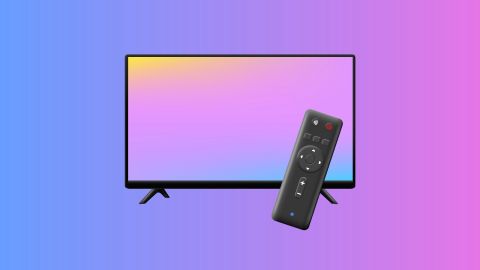A video codec is a software or tool that compresses and decompresses digital video. Without it, video files would be too large to store or stream. Codecs help reduce file size while keeping quality. They also ensure your video plays smoothly on different devices. H.264 and H.265 are both popular codecs. They decide how fast a video loads, how clear it looks, and how much space it takes. If you want faster loading and better quality, choosing the right codec matters. Whether you are a content creator, editor, or home user, codecs play a big role in your viewing experience.
What is H.264 AVC
H.264, also called Advanced Video Coding (AVC), is one of the most widely used video codecs today.
Advanced Video Coding: H.264 balances video quality and file size. It is suitable for many uses like streaming, Blu-ray discs, and online video.
Key features of H.264: It supports HD content, has low delay, and is compatible with many platforms.
Advantage and disadvantage: The main advantage is its wide support and decent quality. The downside is it creates larger files compared to newer codecs like H.265.
What is H.265 HEVC
H.265, also known as High-Efficiency Video Coding (HEVC), is the successor to H.264.
Advanced Video Coding: H.265 improves video compression. It offers the same quality as H.264 but in smaller files.
Key features of H.265: It supports 4K and 8K video, reduces bandwidth use, and delivers sharper detail.
Advantage and disadvantage: H.265 saves space and improves quality. However, it needs more powerful devices and is not supported by all software.
Difference between H.264 vs. H.265
Video compression is a crucial process that reduces file sizes for easier storage and faster streaming, while maintaining video quality. H.265 (HEVC) and H.264 are the two most popular video compression codecs, each with its own advantages. H.265 offers superior compression, achieving the same video quality as H.264 but at half the file size, making it ideal for streaming high-definition content with limited bandwidth. However, H.264 remains widely used due to its compatibility across various devices and platforms. Understanding the differences between these two codecs helps you choose the right option based on your needs for quality, storage, and performance. For the latest new TV model options, explore the top choices available today.
What is H.264 compression and how does it work?
H.264 is a video compression standard: It reduces the size of video files while maintaining high quality. It is commonly used for streaming, video conferencing, and video storage.
It works by removing redundant data: H.264 eliminates unnecessary information from video frames, encoding only the key data required to reproduce the video.
It uses inter-frame compression: H.264 compares consecutive video frames and stores only the differences between them rather than storing each full frame individually.
It supports high-quality video at lower bitrates: H.264 can compress videos without significant quality loss, making it ideal for streaming high-definition content, such as on YouTube and Netflix.
It is widely compatible: Haier TV is supported by most modern devices, including smartphones, tablets, and smart TVs, ensuring seamless playback across various platforms.
Explore different TV price options for affordable, high-quality models with H.264 support.
What is H.265 compression, and how does it work?
H.265 (HEVC) is a video compression standard: It improves upon H.264 by offering better compression rates, allowing for higher-quality video at smaller file sizes.
It uses advanced encoding techniques: H.265 reduces the data needed to store video by compressing the video more efficiently, especially for high-resolution videos like 4K and 8K.
It applies intra-frame and inter-frame compression: Similar to H.264, H.265 uses inter-frame compression by storing only the differences between frames, but it also improves how individual frames are compressed.
It offers up to 50% better compression than H.264: This means you can store or stream the same video quality at half the file size of your TCL TV, making it ideal for high-definition and high-bitrate content.
It requires more processing power: Although H.265 offers better compression decoding, it requires more processing power, which can be a limitation on older devices or hardware.
Key differences between H.264 and H.265
Aspect
|
H.264
|
H.265
|
Compression efficiency
|
Lower compression efficiency, requiring more data for the same video quality
|
Up to 50% better compression efficiency, reducing data usage without losing quality
|
File size
|
Produces larger file sizes for HD and 4K videos
|
Compresses video into smaller files without reducing quality, ideal for HD and 4K content
|
Compatibility
|
Supported by most devices and software; widely used for streaming
|
Needs newer hardware and software; not as broadly supported as H.264
|
Performance
|
Suitable for standard HD streaming and playback
|
Better for high-definition and 4K streaming; uses less bandwidth for the same video quality
|
Processing requirements
|
Works well on older and less powerful devices
|
Needs more processing power for decoding; may affect playback on older systems
|
Efficiency and file size comparison: H.264 vs. H.265
H.265, also known as HEVC (High-Efficiency Video Coding), significantly improves upon the H.264 standard by offering better compression efficiency without sacrificing video quality. While H.264 remains the most widely used codec due to its broad compatibility, H.265 achieves up to 50% better compression efficiency, meaning it uses less data for high-definition video content. This allows for smaller file sizes while maintaining video quality, making it ideal for streaming services and high-quality video content on platforms like Netflix and YouTube. However, H.265 requires more advanced hardware support, which can be a limitation on older devices. Despite these advantages, H.264 remains a reliable choice due to its widespread support and compatibility across various devices.
If you are looking to upgrade your viewing experience, Samsung LED TVs are a great option that support H.265 for superior video quality and efficiency.
Get TVs on Easy EMIs with Bajaj Finserv
Bringing home a high-performance TV is now simple with Bajaj Finserv’s flexible financing options and latest offers. Follow these easy steps to buy your preferred TV on Easy EMIs.
Explore models on Bajaj Mall: Browse through a wide range of LED, QLED, OLED, and smart TVs on Bajaj Mall. Compare screen sizes, resolutions, sound quality, and smart features to choose the model that suits your home viewing needs.
Visit a partner store: Once you have shortlisted a model, visit any of Bajaj Finserv’s 1.5 lakh partner stores across 4,000 Indian cities. See the product in person and speak to experts if needed before finalising your purchase.
Choose the Easy EMI Loan option: At checkout, select the Bajaj Finserv Easy EMI Loan. Get financing of up to Rs. 5 lakh and convert your TV purchase into Easy EMIs. Some TV models may also be available with zero down payment.
Check your loan eligibility online: To make your shopping experience smoother, check your pre-approved loan limit by entering your mobile number and OTP. This gives you a clear idea of how much you can borrow before visiting the store.
Use the EMI Network Card for purchases up to Rs. 3 lakh: If you have a Bajaj Finserv EMI Network Card, use it to divide purchases of up to Rs. 3 lakh into monthly instalments—no paperwork, no delays.
TV by brand
TV by features
TV by size
TVs by brands
TVs by budget









